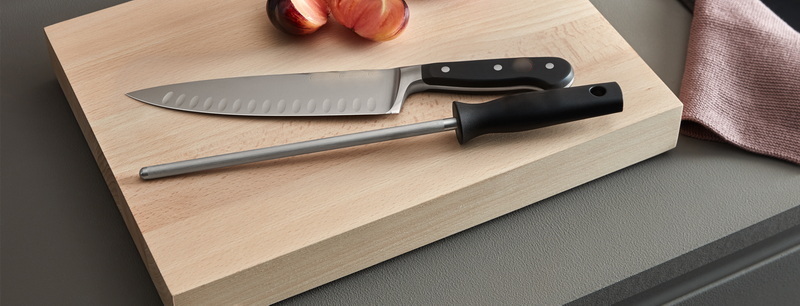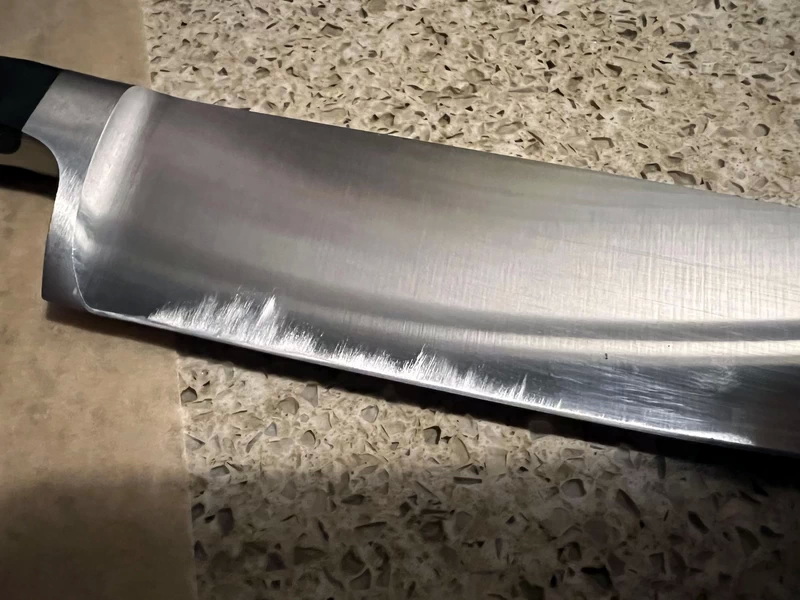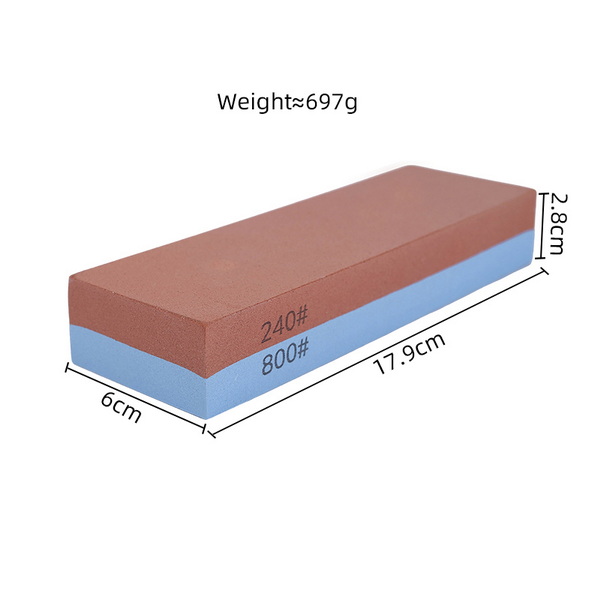

Views: 222 Author: Ella Publish Time: 2025-05-26 Origin: Site








Content Menu
● Understanding Your Wüsthof Classic Vegetable Knife 8
● Why Sharpen Your Wüsthof Vegetable Knife?
● Methods to Sharpen Your Wüsthof Classic Vegetable Knife 8
>> 1. Honing Steel: Regular Maintenance
>> 2. Hand-Held Knife Sharpener: Quick and Convenient
>> 3. Whetstone: Professional Sharpening
>> 4. Electric Sharpeners: Automated Precision
● Additional Tips for Maintaining Your Wüsthof Classic Vegetable Knife 8
>> Avoid Cutting Hard Materials
● FAQ
>> 1. How often should I sharpen my Wüsthof Classic Vegetable Knife 8?
>> 2. What angle should I use when sharpening my Wüsthof Classic Vegetable Knife?
>> 3. Can I use any sharpener for my Wüsthof knife?
>> 4. Is honing the same as sharpening?
>> 5. How do I know when my knife needs sharpening instead of just honing?
Maintaining the sharpness of your Wüsthof Classic Vegetable Knife 8 is essential for efficient, safe, and enjoyable cooking. This article provides a comprehensive guide on how to sharpen this premium kitchen tool using various methods, including honing steels, hand-held sharpeners, whetstones, and electric sharpeners.

Before sharpening, it's important to understand the knife itself:
- Blade Material: Made from high-quality stainless steel that is durable, corrosion-resistant, and easy to sharpen.
- Edge Angle: Typically sharpened at a 14-degree angle per side, which balances sharpness and durability.
- Design: Forged blade with an ergonomic handle for precision and comfort.
The Wüsthof Classic Vegetable Knife is designed specifically for slicing, dicing, and chopping vegetables with precision. Its thin, slightly curved blade allows for smooth rocking motions, making it a favorite among professional chefs and home cooks alike. Because it's used frequently for delicate tasks, maintaining a razor-sharp edge is critical to preserve the integrity of your ingredients and ensure clean cuts.
- Safety: A sharp knife requires less force, reducing the risk of slips and injuries.
- Performance: Sharp blades cut cleanly, preserving the texture and integrity of vegetables.
- Longevity: Proper sharpening prolongs the life of your knife by maintaining its edge.
- Efficiency: A sharp knife speeds up prep time, making cooking more enjoyable.
- Precision: Sharp edges allow for more accurate cuts, important for recipes requiring uniform pieces.
Regular sharpening also prevents the blade from becoming chipped or damaged, which can happen if dull knives are forced through tougher vegetables. Investing time in proper sharpening techniques ensures you get the best performance from your Wüsthof Classic Vegetable Knife 8 for years to come.
Sharpening your knife can be done through several methods, each with its own advantages and best-use scenarios. Below, we explore the most effective techniques.
Purpose: Honing is not sharpening but rather realigning the microscopic teeth of the blade that bend during use. It's essential for daily maintenance.
Steps:
- Place the honing steel vertically with the tip resting on a stable, nonslip surface.
- Hold the knife at a 14-degree angle to the steel.
- Starting at the heel, draw the blade down and toward you along the steel, ending at the tip.
- Alternate sides, repeating 6-8 times per side.
- Hand wash the knife afterward to remove any metal residue.
Why Use Honing Steel?
Honing keeps the edge aligned, ensuring consistent cutting performance between sharpenings. It's quick, easy, and should be done frequently — ideally before or after each use.
Purpose: Hand-held sharpeners are perfect for home cooks who want an easy way to sharpen knives without mastering complex techniques.
Steps:
- Place the sharpener on a flat surface.
- Insert the blade fully into the coarse slot (for dull knives) or fine slot (for honing).
- Pull the knife slowly from heel to tip through the slot without applying extra pressure.
- Repeat 3-6 times on the coarse slot if sharpening, then finish with the fine slot.
- Use the fine slot regularly; coarse slot only once or twice a year.
Advantages:
These sharpeners have preset angle guides that ensure you sharpen at the correct 14-degree angle. They are portable, affordable, and require minimal skill.
Limitations:
They remove more metal than necessary if used too often, so they're best for occasional sharpening rather than daily maintenance.

Purpose: Whetstones provide the most precise and customizable sharpening experience, favored by professionals and enthusiasts.
Preparation:
- Soak the whetstone in water for about 10 minutes.
- Place it on a flat, slip-resistant surface with the coarse side up.
Sharpening Steps:
- Hold the knife at a 14-degree angle.
- Starting at the tip, slide the blade evenly across the stone toward the heel.
- Repeat on the opposite side.
- Flip the stone to the fine grit side and repeat to polish the edge.
- Rinse and dry the knife immediately after sharpening.
Why Choose Whetstone?
Whetstones allow you to control the sharpening angle and pressure precisely, resulting in a sharper, longer-lasting edge. They also help restore knives that have become very dull or damaged.
Tips for Using Whetstone:
- Keep the stone wet during sharpening to reduce friction and prevent metal particles from clogging the surface.
- Use consistent, smooth strokes to maintain an even edge.
- Practice patience; sharpening with a whetstone requires time and technique but yields excellent results.
Purpose: Electric sharpeners offer a fast, automated way to sharpen knives with minimal effort.
Steps:
- Place the sharpener on a stable surface.
- Insert the blade into the slot at a 14-degree angle.
- Pull the blade slowly through the sharpening slot.
- The device often has stages for coarse sharpening and fine honing.
- Follow manufacturer instructions for best results.
Advantages:
Electric sharpeners are ideal for those who want consistent results quickly. They are especially useful if you have multiple knives to sharpen regularly.
Considerations:
Some electric sharpeners remove more metal than necessary and can shorten the lifespan of your blade if overused. Always choose a sharpener compatible with Wüsthof knives and designed to maintain the correct edge angle.
Storing your knife correctly helps preserve its edge. Avoid tossing knives loosely in drawers where they can bump against other utensils. Instead, use:
- Knife blocks
- Magnetic strips
- Protective blade guards
Always hand wash your Wüsthof knife with warm, soapy water and dry it immediately. Avoid the dishwasher as harsh detergents and heat can damage the blade and handle.
Periodically check your knife for chips, rust spots, or dullness. Early detection helps prevent further damage and ensures timely sharpening.
Do not use your vegetable knife to cut frozen foods, bones, or other hard materials. This can chip or dull the blade quickly.
Sharpening your Wüsthof Classic Vegetable Knife 8 is vital for maintaining its performance, safety, and longevity. Whether you choose honing steels for regular upkeep, hand-held sharpeners for convenience, whetstones for professional precision, or electric sharpeners for ease, following the correct techniques ensures your knife remains razor-sharp. Regular maintenance not only improves your cooking experience but also protects your investment in this high-quality kitchen tool. By incorporating proper storage, cleaning, and usage habits, you can extend the life of your knife and enjoy its exceptional performance for years to come.

You should hone your knife regularly, ideally before or after each use, to maintain the edge. Sharpening with a stone or sharpener is recommended once or twice a year, depending on usage frequency and blade condition.
Maintain a 14-degree angle per side for the Wüsthof Classic series to preserve the factory edge and balance sharpness with durability.
It's best to use sharpeners designed for Wüsthof knives or those with adjustable angle guides set to 14 degrees. Using inappropriate sharpeners can damage the blade.
No. Honing realigns the blade's edge without removing metal, while sharpening grinds and removes steel to create a new edge.
If the knife struggles to cut through food cleanly or requires excessive force, it likely needs sharpening. Honing is for routine maintenance and won't fix a dull blade.